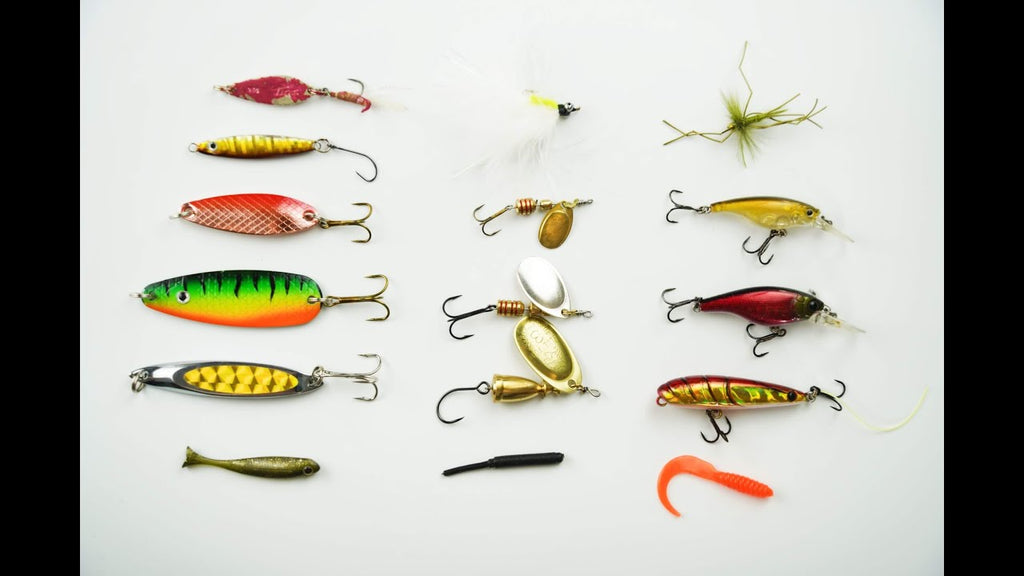

From classic spinners to finesse soft baits, discover the top trout fishing lures that will help you catch more fish in any water body. Trout are beautiful, strong, and often very picky eaters. This makes them a favorite target for anglers worldwide. But their discerning nature means your lure choice is critical. What are the best lures for trout? The answer often depends on where you're fishing—a flowing river or a calm lake. This guide breaks down the seven essential that will consistently put fish in your net. Get ready to fill your tackle box with proven winners.

The Classics: Spinners and Spoons
For decades, these simple metal lures have been fooling trout. Their effectiveness lies in their ability to create flash and vibration. These two elements trigger a trout's predatory instincts.
1. The In-Line Spinner: A Must-Have for Every Angler
The in-line spinner is arguably the most iconic trout lure. It consists of a blade that rotates around a central wire. This creates a mesmerizing flash and a distinct vibration in the water. It's incredibly easy to use: just cast and retrieve. This lure is especially effective in rivers and streams. The current helps the blade spin, even on a slow retrieve.

2. The Casting Spoon: Versatility in a Simple Design
Spoons are simple yet deadly. These curved pieces of metal wobble and flutter on the retrieve. This perfectly imitates a wounded baitfish. They can be cast long distances, making them great for covering water in lakes. In rivers, you can swing them through currents to entice strikes. The simple design of makes them a timeless classic for all kinds of fishing.
Realistic Imitations: Minnows and Crankbaits
Trout often feed on small fish. Lures that mimic this primary food source are always a great choice. These hard baits offer a realistic profile and action.
3. The Suspending Jerkbait/Minnow: Fooling Wary Trout
A small, slender jerkbait is a secret weapon in clear water. These lures have a realistic minnow shape. With a twitch of your rod, they dart erratically. Then, they suspend in the water column. This pause is often when a cautious trout will strike. They are fantastic for fooling large, educated fish.
4. The Small Crankbait: Diving to Their Level
When trout are holding in deeper water, a small crankbait is the perfect tool. These lures have a plastic lip that allows them to dive to a specific depth. This lets you present your lure right in the strike zone. Use them to explore drop-offs and structure in lakes. They are also great for deeper pools in large rivers.
Finesse Approaches: Jigs and Soft Plastics
Sometimes, trout want a smaller, more subtle presentation. Finesse techniques with jigs and soft plastics can be the key to success when the bite is tough.
5. The Marabou Jig: A Subtle, Lifelike Presentation
A marabou jig is simple but incredibly effective. The marabou feathers breathe and pulsate in the water. This creates a very lifelike movement, even with minimal action from the angler. It's an excellent choice for drifting under a float in a river. It can also be hopped along the bottom in lakes.
6. The Tube Jig: Imitating Small Crayfish and Baitfish
Small tube jigs are another fantastic finesse option. Their hollow body and tantalizing tentacles can imitate a variety of food sources. You can insert a lead head jig inside the tube. This setup is great for bouncing along the bottom of rivers and lakes. Trout find the spiral action on the fall irresistible.
7. The Soft Plastic Worm/Grub: The Ultimate Finesse Option
Never underestimate the power of a small soft plastic. Tiny worms or grubs rigged on a small jig head are deadly. Brands like Trout Magnet have built their name on this simple concept. This is the ultimate presentation for highly pressured or finicky trout. It's a numbers game, and these small baits catch a lot of fish.

How to Choose the Right Trout Lure Color
Which lure color should you use? The answer depends on the conditions. Let this simple rule guide you.
Bright Days & Clear Water: Go Natural
On sunny days or in very clear water, trout can see very well. They are more likely to strike lures that look realistic. Choose natural colors.
-
Silver
-
Gold
-
Brown
-
Olive green
-
White
Overcast Days & Stained Water: Go Bright and Bold
On cloudy days or in murky water, you need your lure to stand out. Bright and bold colors are much more visible.
-
Chartreuse
-
Hot pink
-
Fire tiger
-
Bright orange
Tying It All Together: Building Your Trout Arsenal
You don't need hundreds of lures to be a successful trout angler. Your arsenal is complete with a few from each category. These seven types of lures will prepare you for almost any situation. They will help you catch trout in both rivers and lakes.
Ready to build your ultimate trout tackle box? .
What is your all-time favorite lure for catching trout? Share it in the comments below!
Frequently Asked Questions (FAQ) about Trout Fishing Lures
What is the single best lure for river trout fishing?
An in-line spinner is arguably the single best lure for river trout fishing. Its flash and vibration work exceptionally well in moving water. It is easy to use and effective for a wide range of trout species. It is a must-have for any river angler.
Do trout bite lures at night?
Yes, especially large brown trout. They are aggressive nighttime predators. At night, choose lures that create a strong silhouette or vibration. Dark-colored jerkbaits and noisy topwater lures can be very effective after the sun goes down.
How do I fish a lure for trout without scaring them?
Be stealthy. Trout are easily spooked. Cast upstream and let your lure drift down naturally. Wear clothing that blends in with your surroundings. Avoid making sudden movements or loud noises near the water's edge. Using a long, light also helps.
What size lure is best for trout?
Generally, smaller is better. Most trout lures are between 1 and 3 inches long (about 2.5 to 7.5 cm). Match the size of your lure to the size of the natural baitfish in the water. If you are targeting very large lake trout, you can use larger











